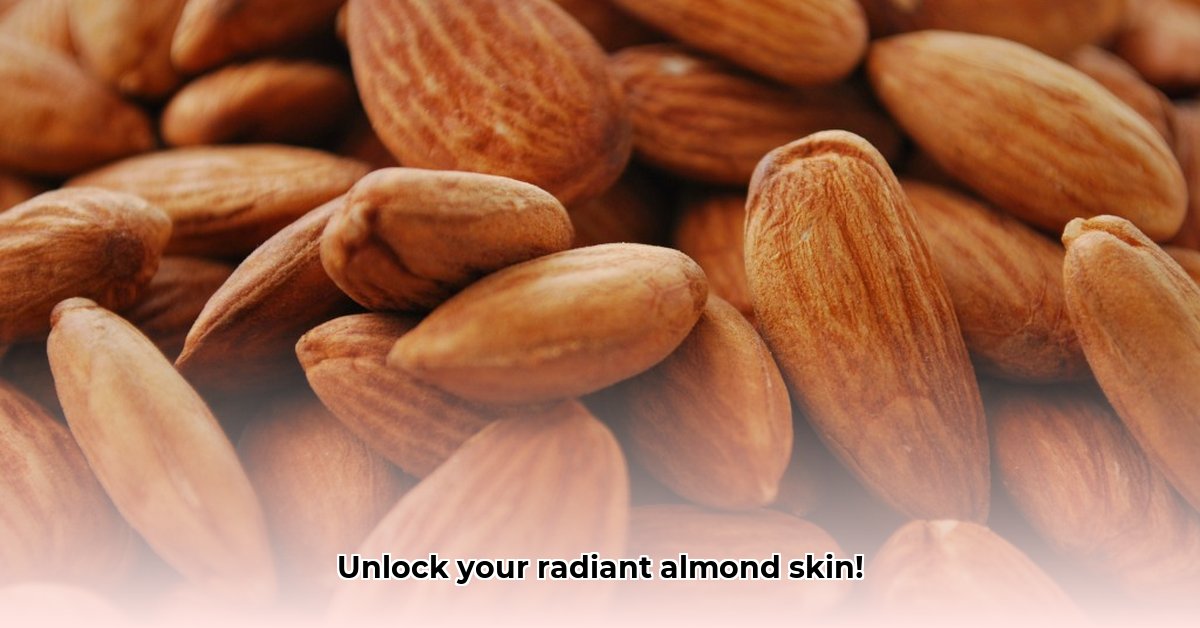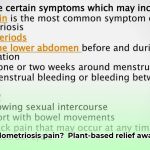Ever noticed how your skin has a special something? If you’ve got that medium-brown skin with cool undertones – think hints of blue, pink, or red – you probably have what’s called almond skin. This guide is all about helping you understand and care for it. We’ll cover everything from what makes almond skin special, to building a skincare routine just for you, and even finding the right makeup. We’ll also talk about dealing with things like uneven skin tone, and keeping your skin healthy and glowing for years to come. Let’s dive in and celebrate your beautiful skin! For more in-depth information, check out this helpful guide on almond skin tones.
Decoding Almond Skin Tone: Exploring Radiant Skin Concepts
So, what exactly is almond skin tone? Think of it as a gorgeous medium-brown complexion, but with a unique nuance. Instead of warm, golden undertones, almond skin leans towards the cool side – hints of pink, blue, or even a little red peek through. Some describe it as a sandy yellow with a light skin tone. This beautiful shade is common among people with Asian, Hispanic, African, or Mediterranean ancestry. Recognizing almond skin’s distinct characteristics is the key to unlocking truly radiant, healthy skin.
Understanding Your Unique Almond Skin: Fitzpatrick Type IV Characteristics and Beyond
Almond skin is often classified as Fitzpatrick Type IV. According to the Fitzpatrick scale, if you have almond skin, your skin is medium brown, rarely burns but tans very easily, your hair is dark, and you have dark eyes (hazel to ebony). This sun-loving nature also signifies that it’s a little more sensitive to sun damage and, therefore, sometimes more prone to hyperpigmentation than lighter skin tones, but generally less sensitive than darker skin tones. Hyperpigmentation simply means areas of your skin become darker than the rest, and it is a common concern. Let’s look at some common types:
- Melasma: Picture brown or grayish patches, often appearing on your face. Hormonal shifts during pregnancy or even with birth control pills are often a contributing factor, but other factors may also play a role. It’s a very common concern for many with almond complexions.
- Sunspots (Solar Lentigines): These are those pesky dark spots that pop up over time due to years of sun exposure, especially if proper sun protection wasn’t consistently used.
- Post-inflammatory Hyperpigmentation (PIH): This happens after your skin has been irritated – think acne breakouts, those pesky ingrown hairs, eczema flare-ups, or even a little too much enthusiastic scrubbing. Inflammation triggers your skin to produce more melanin, leading to those stubborn dark marks afterward.
Knowing these different types of hyperpigmentation helps you understand what might be happening with your skin and choose the right approach to tackle it. Understanding the causes of hyperpigmentation, such as sun exposure and UV radiation, post-inflammatory hyperpigmentation (PIH), aging skin, and genetic predisposition, is crucial in minimizing the appearance of hyperpigmentation.
Crafting Your Personalized Skincare Routine: A Step-by-Step Guide for Healthy Skin
A tailored skincare routine is essential for keeping your almond skin looking its best. Here’s a simple, effective plan:
Step 1: Gentle Cleansing – Morning & Night
Start and end your day with a gentle cleanser to remove impurities without stripping the skin of its natural oils. It’s good to look for cleansers with hydrating ingredients like chamomile or aloe vera; they soothe and nourish almond skin. Avoid harsh sulfates; these can strip your skin of their natural oils, leading to dryness and irritation. Look for something gentle and moisturizing.
Step 2: Targeted Treatment (Optional, but Highly Recommended!)
If hyperpigmentation is a concern, consider adding a serum with ingredients like vitamin C, niacinamide, azelaic acid, or retinoids. Vitamin C is known for its brightening properties. These superstars help fade dark spots over time. Remember, consistency is key, and always do a patch test on a small area of skin first before applying it to your entire face to check for irritation. Your skin will thank you for it!
Step 3: Hydration is Key – Every Day!
Think of hydration as your skin’s lifeline. A good moisturizer keeps it plump, supple, and happy. Ingredients like hyaluronic acid and glycerin work wonders for maintaining a healthy moisture balance. Choose one formulated for your skin type—whether it’s oily, combination, or dry. You’ve got options!
Step 4: Sun Protection – Your Absolute Must-Have
This is non-negotiable! Melanin-rich skin benefits from sunscreen that has a broad spectrum with at least SPF 30; don’t miss a day; apply it daily. Daily sunscreen with at least SPF 30 is crucial, even on cloudy days. The sun is a major culprit behind hyperpigmentation. Reapply every two hours, especially if you’re swimming or sweating.
Step 5: Weekly Exfoliation – Gentle is Best
Once or twice a week, gently exfoliate to remove dead skin cells and reveal the brighter, smoother skin underneath. A chemical exfoliant with AHAs (alpha-hydroxy acids) or BHAs (beta-hydroxy acids) is a great choice, or opt for a gentle scrub—just be sure not to scrub too hard! Almond brown skin tone can benefit from exfoliating ingredients like alpha hydroxy acids (AHAs) or enzymes. However, be cautious not to over-exfoliate; this can lead to irritation.
Makeup Magic for Almond Skin: Enhancing Your Natural Beauty with Appropriate Shades
Makeup can be your best friend when it comes to enhancing your almond skin’s natural radiance. Remember, those cool undertones are your signature.
- Foundation: Look for foundations with cool undertones. You must opt for foundations, concealers, and powders with a yellow or peachy base. This will enhance your natural warmth.
- Concealer: A concealer one or two shades lighter than your foundation can brighten up those hyperpigmented areas, making them less noticeable.
- Blush and Bronzer: Peachy or rosy blushes, and bronzers with cool undertones, will add warmth without washing you out.
- Eyeshadows: Experiment! Many shades complement cool undertones, so have fun and find what you love. Earthy browns, golden hues, and warm copper shades can accentuate the richness of almond skin.
- Lipstick: Embrace a spectrum of lip colors that suit almond skin. Terracotta, warm nude, and peachy shades can enhance your natural lip color and bring balance to your overall makeup look.
Addressing Hyperpigmentation: Treatment Options & Dermatologist Consultation
Several treatments can help with hyperpigmentation, but always consult a dermatologist first. They can properly diagnose the type of hyperpigmentation you have and recommend the best course of action for your skin. Here are some common options:
- Topical Creams: These often contain ingredients like hydroquinone, kojic acid, arbutin, or retinoids.
- Chemical Peels: These are more intense and exfoliate the surface layers of your skin to reduce the appearance of dark spots.
- Laser Therapy: This is a more advanced treatment that uses focused light energy to target hyperpigmentation. It’s generally more effective but often carries higher costs and some potential risks.
- Microdermabrasion: This procedure uses a special applicator to gently remove the top layer of skin, reducing the appearance of hyperpigmentation and improving skin texture.
Sun Protection: Your Everyday Shield Against Sun Damage
We’ve stressed this already, but it bears repeating: Almond skin is sensitive to the sun. Developing and sticking with an effective skincare regime which includes the proper apparel, gentle exfoliation, moisturization and the use of products targeting hyperpigmentation may also be useful. Daily broad-spectrum sunscreen (SPF 30 or higher) is your best defense against hyperpigmentation and premature aging. Don’t forget to reapply every two hours, especially if you’re outdoors for extended periods. Wearing a wide-brimmed hat and sunglasses adds an extra layer of protection. It is crucial to shield your skin from overexposure by wearing sunscreen and protective clothing.
The Bottom Line: Consistency is Key and Celebrate Your Unique Beauty!
Building a consistent skincare routine, making smart makeup choices, and seeking professional advice when needed will keep your almond skin radiant and healthy for years to come. Embrace the warm, neutral undertone in your skin that falls somewhere between beige and olive! Remember, consistency and patience are key. Your skin will thank you for the TLC!
Best Skincare Routine for Almond Skin Tone with Cool Undertones
Key Takeaways:
- Almond skin, a medium-brown complexion, boasts diverse undertones.
- Cool undertones (pink, red, blue) require specific skincare.
- Hyperpigmentation (sunspots, melasma) is a common concern.
- Sun protection (SPF 30+ daily) is crucial as well as protective clothing.
- A tailored routine addresses unique needs.
Understanding Your Almond Skin: Identifying Unique Skin Characteristics
First, let’s define almond skin. It’s a beautiful medium-brown tone, often described as having a warm or cool undertone. Think of it like a chameleon – its exact hue varies depending on the individual. Today, we’re focusing on the best skincare routine for almond skin tone with cool undertones. This often presents as a pinkish or reddish cast.
What makes cool-toned almond skin special
- Plant-based Diet Colitis Remission: Success Stories - December 18, 2025
- Plant Based Diet Breast Cancer: Research-Based Benefits - December 16, 2025
- Plant-Based Diet Ulcerative Colitis Remission: Proven Benefits - December 15, 2025










